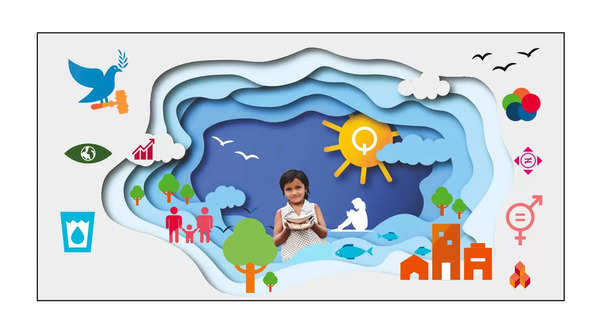Clean Water: Odisha leads in clean water and sanitation but lags in gender equality | Bhubaneswar News


Bhubaneswar: Odisha has emerged as a ‘front runner’ state in providing clean water and sanitation, which corresponds to Sustainable Development Goal (SDG) 6, attaining the highest score of 88, according to the SDG India Index 2023-24 released by NITI Aaayog recently. On the other hand, it received the lowest score of 39 in ensuring gender equality (SDG 5), being ranked an ‘aspirant’ state in the parameter.
The percentage of rural households with piped water connections in the state stands at 72.97, according to the report. The percentage of households with an improved source of drinking water in the state stands at an impressive 99.42. The state has also attained 100% coverage in number of toilets installed in households and districts declared open defecation-free. Srikant Tripathy, a former senior official in the rural development department, said the success in ensuring sanitation in rural areas is linked to the proper implementation of Swachh Bharat Mission (Gramin). “Under the central scheme, major milestones have been achieved,” he said.

He said concentrated efforts were made in the villages, which cover more than 60% of the state’s area. “Public participation too made a difference in achieving success in proper water supply and sanitation,” he added.
The report revealed the state’s sex ratio stands at 894 per 1,000 males, falling short of the NITI Aayog’s target of 950. The national sex ratio stands at 929.
Moreover, the ratio of wage or salary earnings of women to men is 0.59, while 30.3% of married women experience spousal violence, the report said. The ratio of female to male labour force participation is 0.58, and only 60% of women are satisfied with modern family planning methods, it said.
There are 216 women per 1,000 men in managerial positions, while the percentage of women with land holdings is a meagre 4.06. Only 50% of women in the state possess mobile phones, the report revealed.
Experts attributed the low score in SDG 5 to various factors, including a lack of awareness about initiatives designed for women and girls. Human rights activist Biswapriya Kanungo emphasised the need for the govt to popularise initiatives aimed at women empowerment. “State-specific schemes should be extensively launched for women and girls, particularly in rural areas. There are persistent gaps in education, employment and societal participation for women, which need to be addressed,” the activist said.
Swikruti Mishra, a student of Rama Devi Women’s University, said there is a need to introduce specialised schemes for girls in education and startup sectors.















